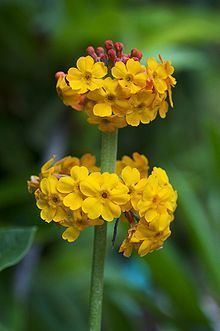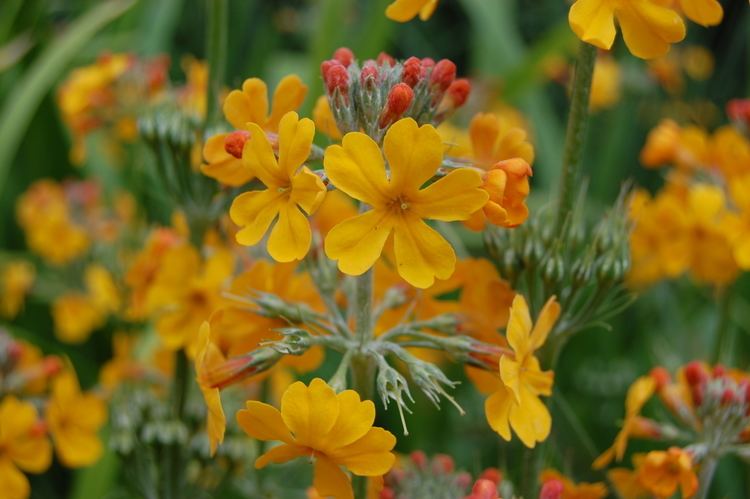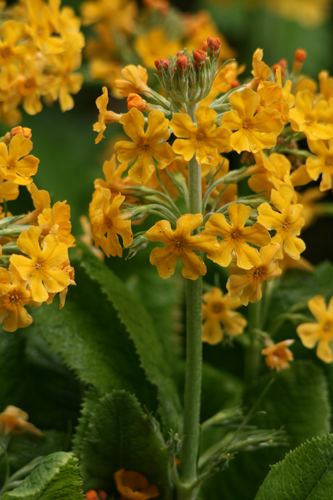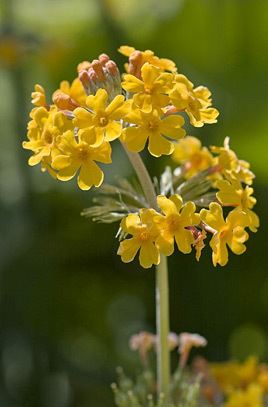Scientific name Primula bulleyana Rank Species | Genus Primula Higher classification Primrose | |
 | ||
Similar Primrose, Primula beesiana, Primula florindae, Primula pulverulenta, Primula denticulata | ||
Primula bulleyana is a species of flowering plant in the family Primulaceae, native to hillsides in China.
It was first introduced by George Forrest from Yunnan province, China, in 1906, and named after Arthur K Bulley, his first sponsor, who was a cotton broker from Liverpool and a keen amateur gardener. He founded the Bees Ltd. nursery and was responsible for the introduction of many hardy plants and alpines to Britain in the early 20th century.

Primula bulleyana is one of a group known as candelabra primulas, so called because of the tiered arrangement of their flowers. It is a semi-evergreen perennial. The sturdy, erect flowering stems appear in summer and are 50–60 cm (20–24 in) long, rising in groups from a rosette of leaves 12–35 cm (5–14 in) long and 3–10 cm (1–4 in) broad. The whorls of multiple orange-yellow flowers, opening from red buds, are arranged in tiers. It thrives in a bright, moist environment, such as beside a pond.

This plant has gained the Royal Horticultural Society's Award of Garden Merit.

